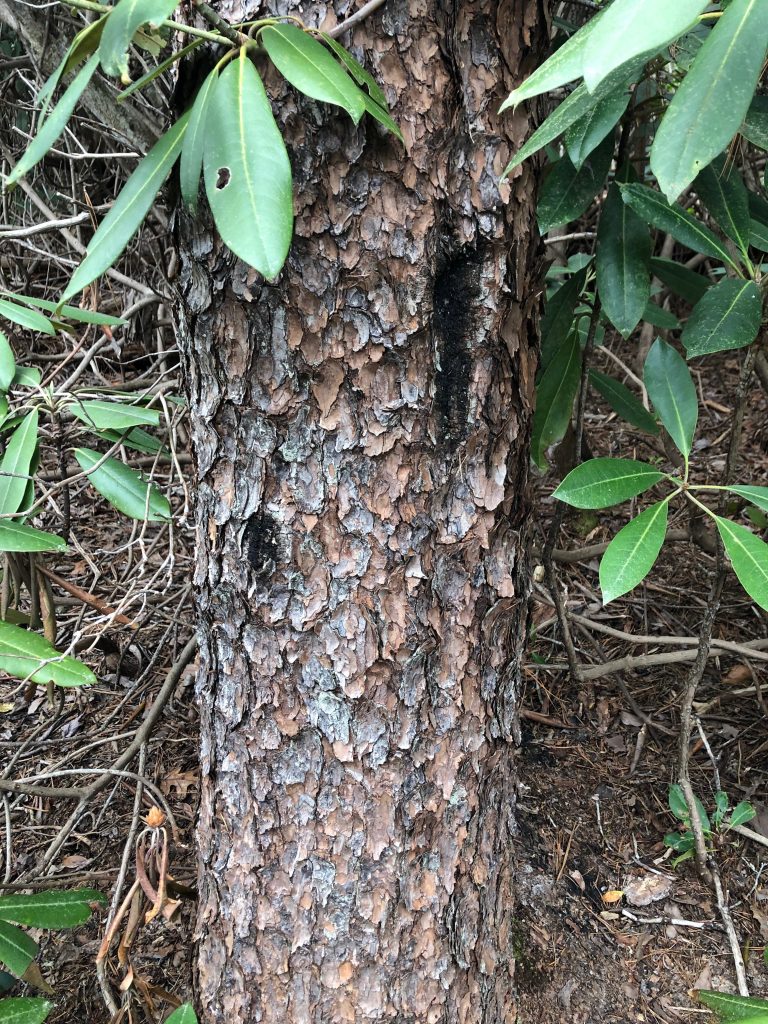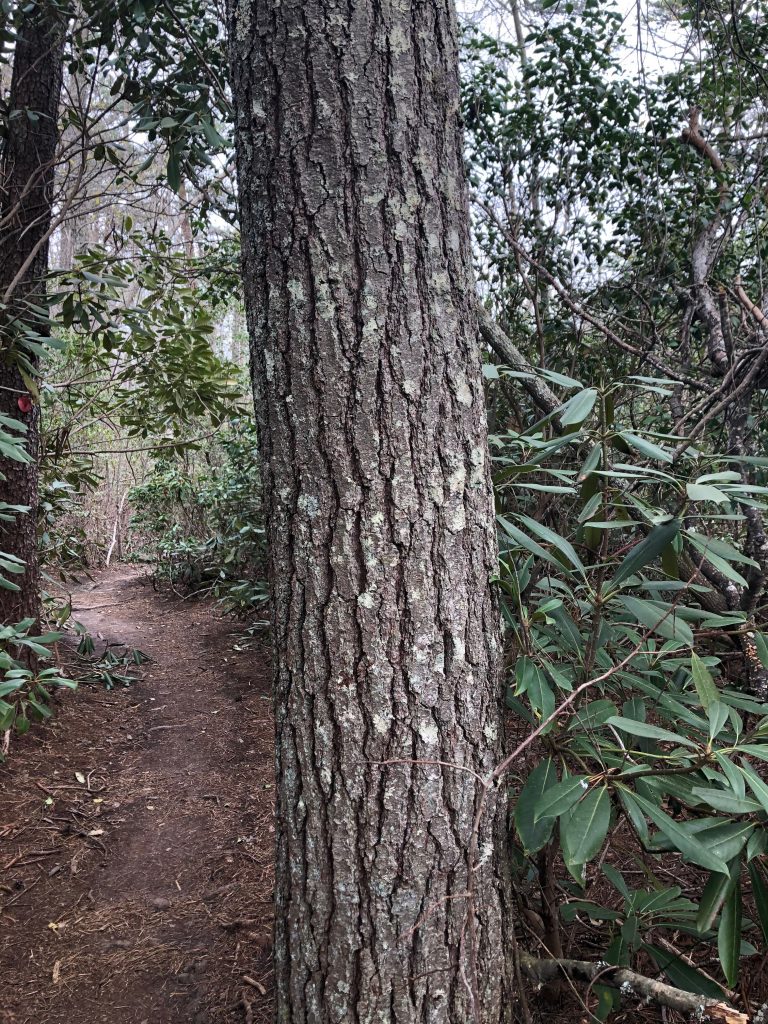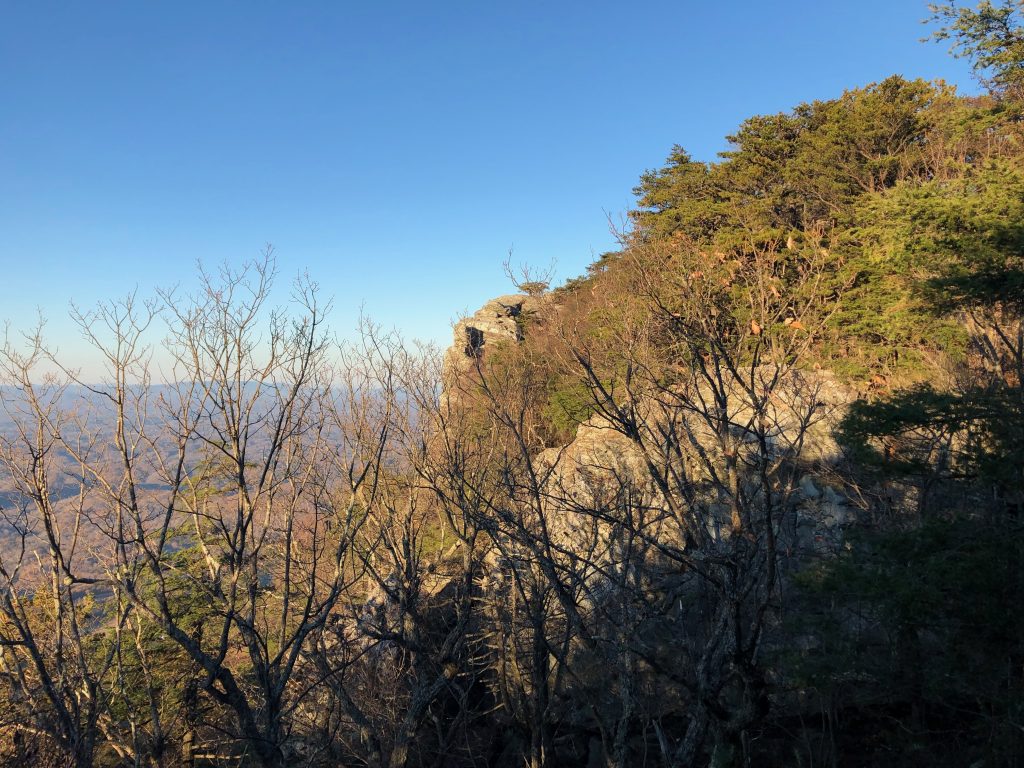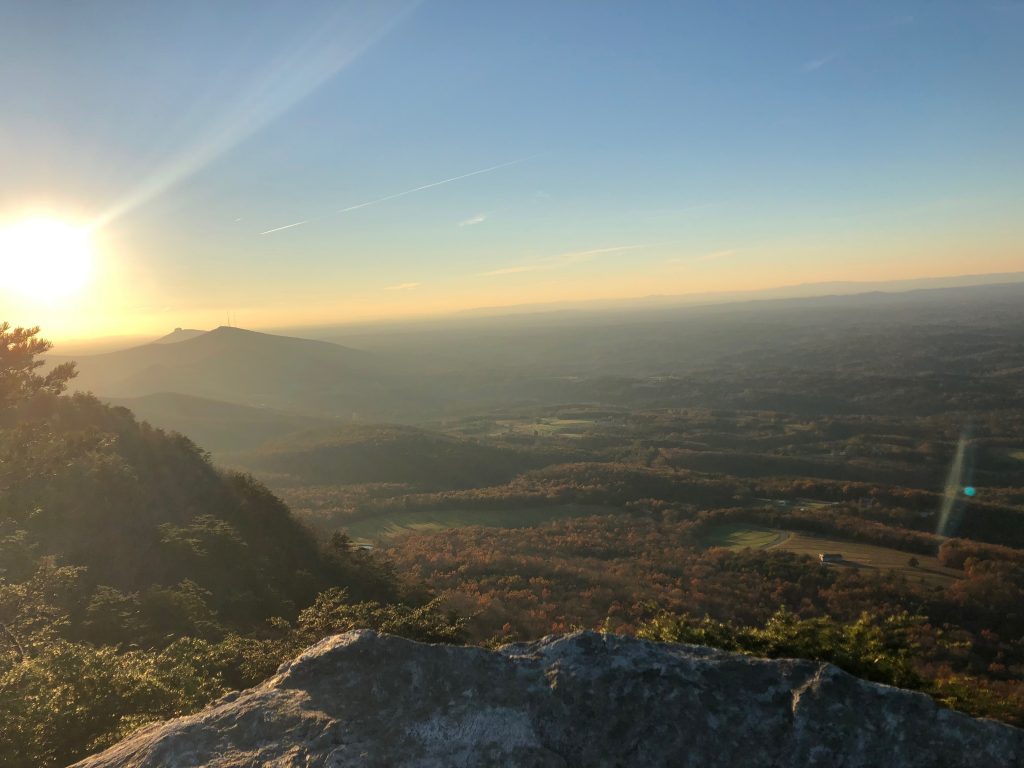I rose silently from the fray of flowers, casting my upwards towards the thicket of vapor-strung Virginia pines (Pinus virginiana, Mill.). Thin, scaly plates of cinnamon colored bark crisscrossed the towering trunks of these pines. Evergreen needles clung to slender branches, shaking loose the lingering stillness of winter in preparation for new warmth. A few weeks from now, these conifers will produce a scourge of cylindrical yellow flowers with curved prickles protruding from the top. As the spring winds sweep in from the west, coarse powdery pollen will erupt from the protrusions and fill the sky in a yellow haze, much to the dismay of many sensitive day hikers. Hopefully they’ll bring enough tissues to notice the small ovoid cones that soon follow. Maybe they will taste the air rich with sap wrapping everything up in a bucolic bliss.

A few paces forward, I found myself face to face with an eastern white pine (Pinus strobus, L.). A perfect opportunity to finally be able to distinguish the two prominent conifers in this region. Around the base of the tree was a bed of amber needles about 3-5 inches in length, about 1.5 inches longer than those of the Virginia pines. Each bundle of needles, known as a fascicle, on the white pine had five slender flexible needles, as opposed to the two divergent needles observed on Virginia pines. The bark of white pine is significantly scalier and more rounded than its compatriot, composed of long ridges and black furrows. Pausing to this detail, I recognized that I would never again confuse the two. Their bark is so remarkably different as well as the patterns of their needles. Yes, they are both pines, but their intricacies and variety are vastly different. I guess we could say the same thing about humans. While we are all Homo sapiens, we distinguish ourselves based on cultural, ethnic, and racial backgrounds that compose our identity. Only by peering behind the obvious can we begin to recognize and appreciate our own variety within these natural spaces.

As if appreciative of my recognition, both the White and Virginia pines sang to me as I climbed towards Moore’s Knob. Gusts of crisp spring air sent groans down their trunks like they had just been hit by foul balls at a baseball game. I observed no changes in their abundance as I scrambled over quartzite shelves, dodged low-hanging mountain laurel branches, or wound my way around muddy ruts in the trail. Tufted titmice (Baeolophus bicolor) and Carolina wrens (Thryothorus ludovicianus) emitting soft calls from somewhere in the canopy of evergreen needles. The long, lonesome drum of the pileated woodpecker (Dryocopus pileatus) made the forest hold its breath and rejoice in the silence that followed.

Moore’s Knob commanded this silence better than any space I have ever wandered through. As the pines withdrew, the dynamic quartzite shelf rose up over all nearby mountain peaks. From atop the observation tower, I could see for what felt forever. The glistening peak of Hanging Rock shone out like a lighthouse on the shore, beckoning all to come forward to reach safe ground. Off to my right, Pilot Mountain swelled in the twilight and towered remarkably over the minuscule cityscape of Winston-Salem far below. All was revealed in its majesty and glory.

Something is truly magical about the setting sun. As the heat of the day dissipates into cool night air, lingering concerns and anxieties appear to do the same. It is as if the earth is bathing itself in a radiant glow, scrubbing away the blemishes of today for the smoothness of tomorrow. I am in a lullaby, sung to sleep by Spring herself.

“Fall asleep and forget all your troubles. Dream of laughter and old friends and lovers”